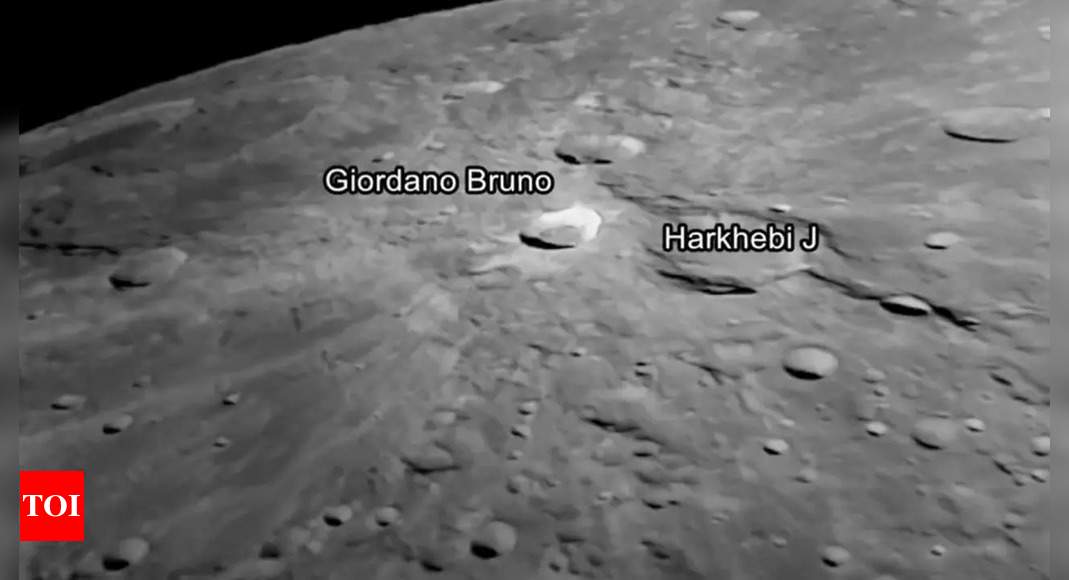The images, released by Isro on Thursday, showed the craters on the Moon’s surface that were marked on the photographs released by Isro as ‘Fabry’, ‘Giordano Bruno’ and ‘Harkhebi J’.
Isro shared on X (formerly Twitter) the images captured by the Lander Position Detection Camera (LPDC) on August 15 and visuals from the lander Imager (LI) Camera-1 on August 17 — just after the separation from the propulsion module.
Meanwhile, the lander underwent a crucial deboosting manoeuvre and descended to a slightly lower orbit on Friday, after successfully getting separated from the propulsion module the day before. The deboosting manoeuvre was scheduled at around 4pm.
“The lander module (LM) health is normal. LM successfully underwent a deboosting operation that reduced its orbit to 113 km x 157 km. The second deboosting operation is scheduled for August 20, 2023, around 0200 Hrs. IST,” tweeted Isro. Deboosting is the process of slowing down to position itself in an orbit where the orbit’s closest point to the Moon (Perilune) is 30 km and the farthest point (the Apolune) is 100 km.
The lander module had successfully separated from the propulsion module on Thursday, 35 days after the spacecraft was launched on July 14. The module comprising the Vikram lander and Pragyan rover will on Friday be lowered to an orbit that takes it closer to the Moon’s surface for the soft landing on the lunar south pole on August 23.
The lander has the capability to soft land at a specified lunar site and deploy the rover that will carry out in-situ chemical analysis of the Moon’s surface during the course of its mobility. The lander and the rover have scientific payloads to carry out experiments on the lunar surface.
Isro is bidding to make a successful soft landing on the Moon on August 23, which will make India the fourth country in the world to achieve the feat after the United States, Russia, and China.
Meanwhile, the propulsion module, which had separated from the lander module on Thursday, will continue its journey in the current orbit for months or even years, the space agency said. The stated objectives of Chandrayaan-3, whose approved cost is Rs 250 crore, excluding the launch vehicle cost, are safe and soft landing, rover roving on the moon’s surface, and in-situ scientific experiments.
Watch ISRO releases breathtaking visuals of the Moon captured by Chandrayaan-3’s Vikram lander

